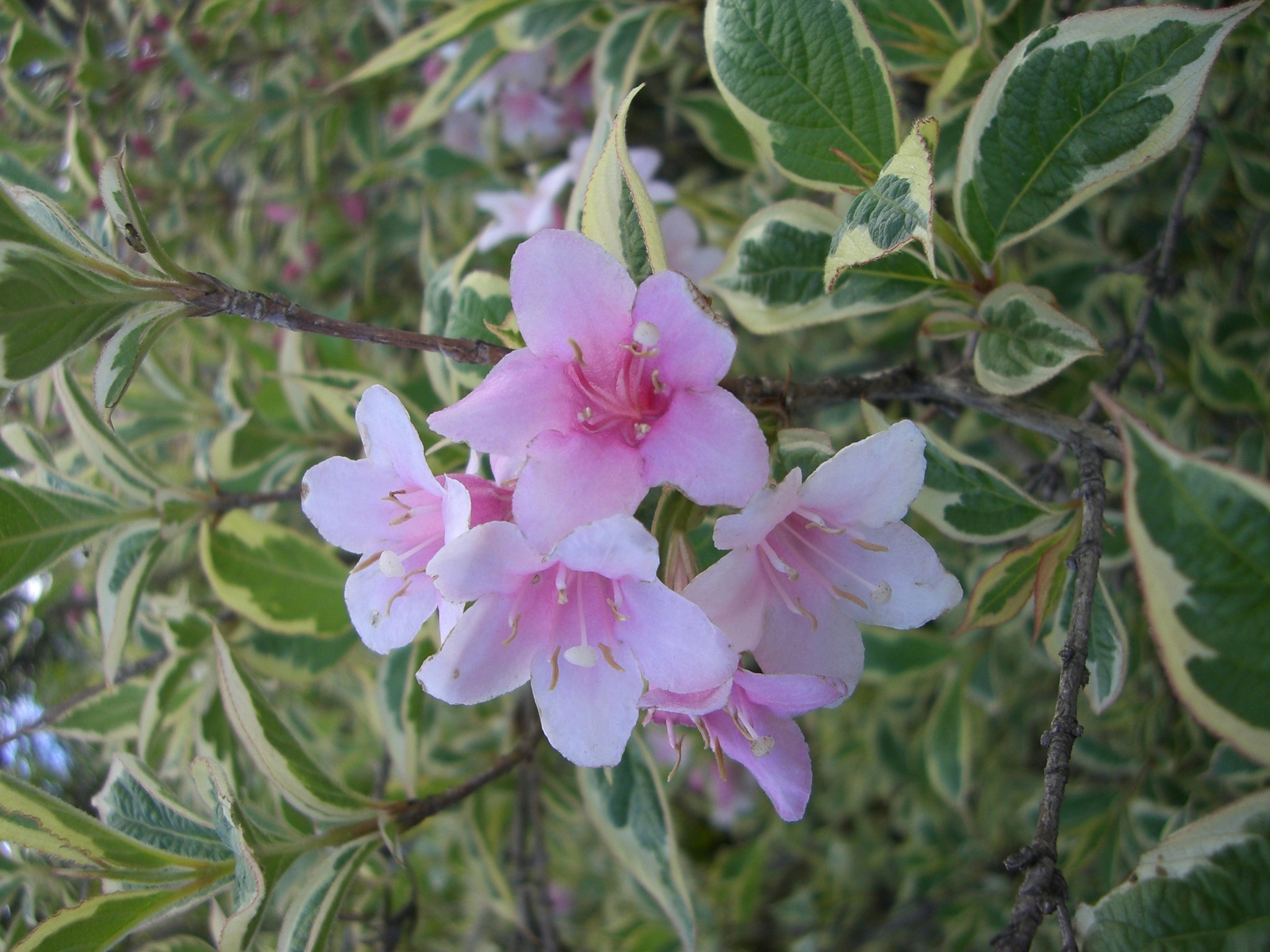
Commemorating Christian Ehrenfried von Weigel (1748–1831), German botanist and professor at Greifswald in N Germany.
Deciduous shrubs. Leaves opposite, simple, saw-toothed, stalked. Flower clusters axillary or terminal, often branching in 3s at each division. Calyx forming a narrow tube with 5 lobes. Corolla bell- to funnelshaped, slightly irregular, with 5 lobes. Stamens 5. Ovary with 2 chambers and containing numerous ovules. Fruit elongated, tough, with 2 valves.
Fast growing, medium-sized border shrubs with abundant funnel-shaped flowers in spring and summer.
Softwood and semi-hardwood cuttings.
Fruit a capsule with 2 valves and numerous seeds; stamens 5; flowers pinkish to red, not 2-lipped.
10 species from E Asia.
Bailey (1929), Howard (1965).
Source: (2002). Caprifoliaceae. In: . Horticultural Flora of South-eastern Australia. Volume 4. Flowering plants. Dicotyledons. Part 3. The identification of garden and cultivated plants. University of New South Wales Press.

Weigela florida was the most popular cultivated species until, in the late 19th century, hybridisation began in major European nurseries in Belgium, France, Germany and Poland, producing much larger and more colourful cultivars, many of which are still available today. Worldwide,170 cultivars are known. The literature sometimes treats cultivars under W. florida although their origin is often uncertain. In Australia there seems to have been confusion between W. florida and W. floribunda.
Buds carmine, flowers deep pink and extremely large.
Raised Lemoine, France, 1896.
Medium shrub with abundant deep carmine to brownish red flowers.
Raised at Rathke in Pruszcz, near Danzig (now Gdansk, Poland), 1892.
Leaves yellow with reddish base. Flowers prolific, carmine.
Raised van Houtte, Holland, 1876.
Similar to 'Eva Rathke' but stems green in winter, the flowers purplish red.
Raised V.A.Vanicek, Newport, Rhode Island, New York, USA, in the 1940s.
Low shrub with pale green leaves. Flowers abundant, medium-sized, carmine, becoming deeper with age.
Raised Klenert, Graz, Austria, 1908.